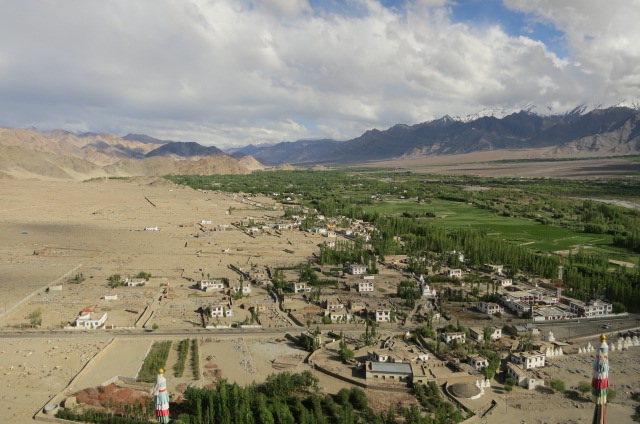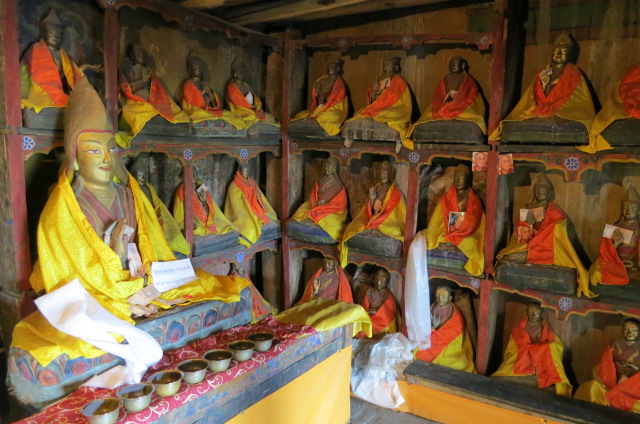From Pang we had a short day to the shrinking Tso Kar Lake. We were picturing camping by the blue waters but all we could see was salt plains in the distance. We did see a herd of wild donkeys instead as a small compensation. We treated ourselves to dinner at one of the luxury camps dining tents for a diet change from rice, dahl and subje. A large group of motorcyclists came in well after dark – cold, wet feet and feeling miserable because of altitude. Not happy campers.
We were away early next morning for the long climb to the final and highest pass, Tanglang La, of 5300m, up the soon to be paved but presently corrugated road. Fortunately the last 5km were sealed which made the last grunt up easier. It was bitterly cold at the top so a quick photo before the descent. We couldn’t believe the large group of road workers (male and female) shovelling snow from the base of large snow drifts at 5300m in a bitterly cold wind for not a lot of gain. What are the people responsible thinking?
The descent from the pass was long and fast and it was great to finally get back into permanent village country at Rumptse where we enjoyed a night’s stay. The old and disintegrating part of the village by the river was interesting and is being replaced by newer buildings alongside the road.
There was a lot of rain the next morning for the rest of the downhill to the Indus River and Uptse village. News of a bakery in the next town, Karu, had us on our bikes and cycling into wind and rain. Karu is the site of the largest military camp in the Himalaya, it took km’s to cycle through but we took advantage of a military canteen to enjoy cheap momos and dosas, before we hit the bakery.
The sun came out for the cycle to Leh – we didn’t quite make it as we were taken by the large monastery at Thiksay so decided to stay there in order to check out the monastery which had great views over the Indus valley, interesting temples within and and fun to wander it’s steep alleyways.
We rolled into Leh the next morning and it was a shock to hit a city of it’s size, especially as it was a significant uphill climb to get to the main bazaar. Once settled in a guesthouse we ventured into the touristy streets to find food. We stumbled on the best eating in town – the Chinese Pot – huge variety and serving size in a tiny low key restaurant.
We just had one rest day in Leh, eating and visiting the sites accessible by foot. Most of Leh’s tourist attractions are a drive away. many cyclists tackle the Khardung La which is a 5600m pass behind town and is meant to be the world’s highest motorable road but we weren’t interested in a long slog – rather save energy for more interesting riding… some may call us lazy!



























